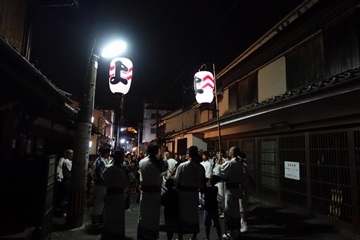History

Early Edo Period (1624-1644):@The first head of the Kuge family, Niemon Kuge, relocates to Yokomachi in Usuki City, Oita Prefecture from Hizen. Hizen was an old province of Japan in the area of the Saga and Nagasaki prefectures.
Late Edo Period (1795-1868):@For generations, the head of the family was asked to perform the role of machidoshiyori (town elder). During this time is when the brewing industry in Usuki City began.
1860:@Genshiro Kuge (the 11th generation of the Kuge family) is given a brewing house in Emuta, Usuki City, by the feudal lord, Akimichi Inaba, and begins to produce a sake called Hinodezuru. The business is founded.
1898:@Tsunezo Kuge (the 13th generation of the Kuge family) is appointed as representative director.
1919:@Our flagship sake is renamed, Ichinoide, after the place name.
@We introduce pioneering bottling to the industry (from barreling).
1929:@Our second factory in Emuta, Usuki City, is extended.
1933:@Kuge Honten is established as a General Partnership Company (similar to an LLP) with a capital fund of \500,000.
1943:@The second factory suspends its operation as a result of a wartime act issued by the government.
1950:@Our captital increases to \1,000,000.
1954:@Genji Kuge (the 14th generation of the Kuge family) is appointed as representative director.
@The second factory reopens.
1966:@A new factory is established in Fushimi, Kyoto.
1978:@We launch our barley shochu, Sekibutsu.
1979:@We launch our daiginjo, Kei.
1990:@Our honjozo, Ichinoide Namazake, is launched.
1992:@The factory in Fushimi, Kyoto, is closes down.
1999:@Yojiro Kuge (the 15th generation of the Kuge family) is appointed as representative director.
2001:@Our antenna shop, Masuya, opens.
2002:@We release our Daiginjo and Ginjo, Nagoriyuki, and barley shochu, Tsunezo.
2004:@Satozo Kuge (the 16th generation of the Kuge family) is appointed as representative director.
2005:@On October 1, the company changes from a General Partnership Company to Kuge Honten Co., Ltd. Our captital increases to \10,000,000.
2007:@Our new potato shochu, Tsunezo, and plum wine, Kabosu to Umeshu no Monogatari, are released. The potato shochu is produced using the Kanta-Kun sweet potato for its high sugar content. And our plum wine is made using kabosu and plums sourced locally from Usuki City.
2008:@We release our special Junmai sake, Ichinoide, using Wakamizu rice, a cultivar known for producing excellent sake.
@We are the recipient of the Gold Award, at the National Research Institute of Brewingfs Japan Sake Awards, for the third consecutive year (2006-2007-2008)
2010:@We invent the gUsuki Bowlh, which consists of a medium sized bowl filled with ice and kabosu. We then add our barley shochu, Tsunezo. It is then shared using a hishaku, a small, long-handled pan.
2014:@We launch a special Junmai - an unfiltered, pure sake called USUKI. Created using Wakamizu rice, a cultivar known for producing excellent sake.
2015:@On October 1, gThe Cheers Ruleh, a local ordinance which we lead the petition for, came into effect.
2017:@We release a new barley shochu, Tsunezo Breeze, which is made using Toyonohoshi, a barley that is produced exclusively in Oita Prefecture.
2020:@We release a new barley shochu, Tsunezo Breeze 40, which is made using Toyonohoshi, a barley that is produced exclusively in Oita Prefecture.
@We also create a spirit called TSUNEZO ALCOHOL 77%, which is made by distilling Kasutori Shochu (raw material: sake lees) several times.
2021:@We create an English version of our website.
*This photo shows people participating in shimenoteuchi, a single clap used to celebrate, at the end of the Usuki Gion Festival (taken in front of Kuge House, Yokomachi, Usuki City)



 ϊ{κ
ϊ{κ